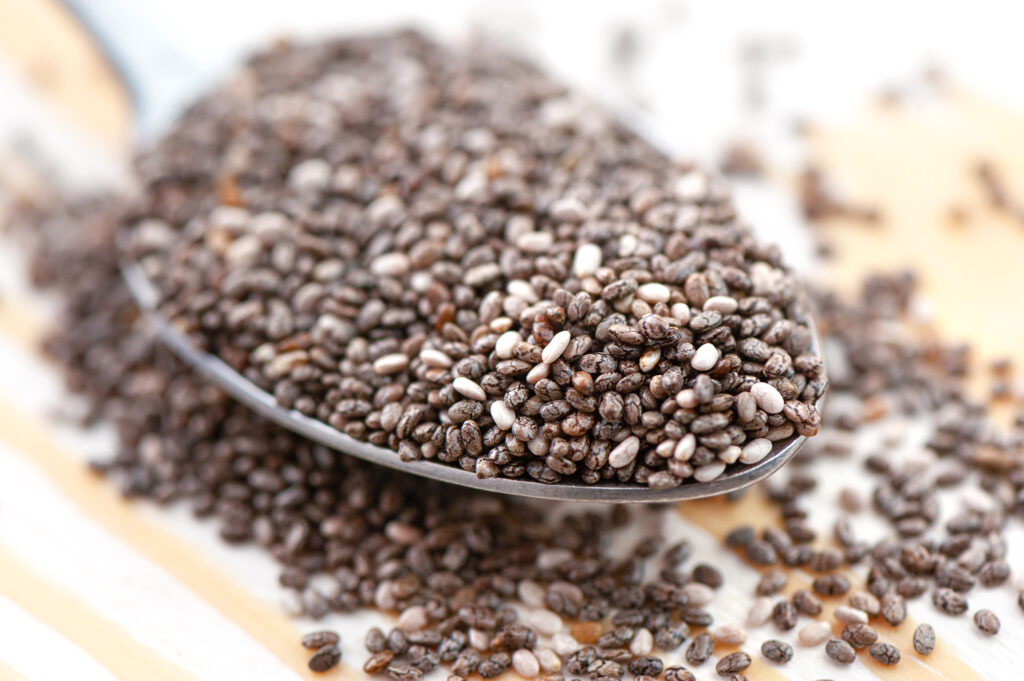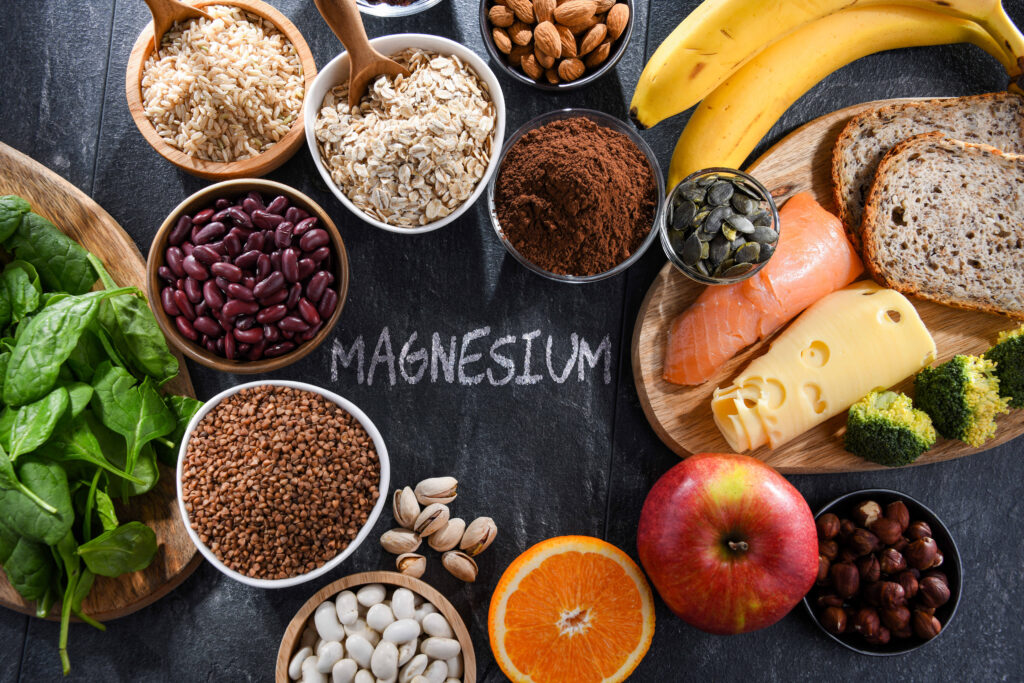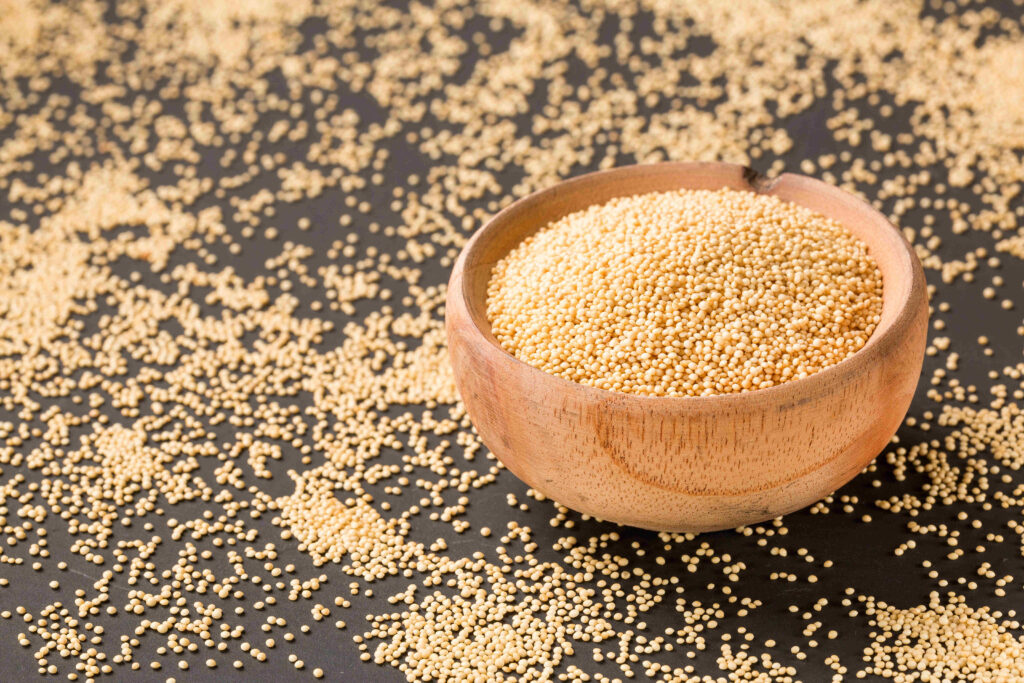Magnesium is an essential mineral involved in over 300 body functions. It supports muscle and nerve function, regulates blood sugar and blood pressure, helps produce energy, strengthens bones, aids in DNA and protein synthesis, and maintains a healthy heart rhythm.
Despite itsmportance, many individuals fall short of their daily magnesium needs, leading to fatigue, muscle cramps, irregular heartbeat, and even mental health concerns.
To help you meet your daily magnesium intake, we’ve compiled a detailed list of some of the richest sources of this essential nutrient, along with their benefits and how to include them in your diet.
How Much Do You Need?
The Recommended Daily Allowance (RDA) of magnesium varies by age and gender. According to the National Institutes of Health (NIH), adult men aged 31 and older need 420 mg daily, while those aged 19–30 require 400 mg.
Magnesium-Rich Foods
These are the healthy foods that are high in magnesium.
1. Spinach
Spinach is one of the most magnesium-rich leafy greens you can eat.
Just one cup (180 grams) of cooked spinach provides about 157 mg of magnesium, which is 37% of the Daily Value (DV).
This versatile green is also packed with calcium, iron, vitamin K, and antioxidants, making it a powerhouse for overall health.
Add spinach to omelets, smoothies, or pasta dishes for an easy nutrient boost. Its mild flavor blends well with almost any meal, and it’s a great way to support bone health, muscle function, and energy production.
2. Nuts
Nuts provide a balanced mix of fiber, protein, and healthy fats. But did you know they are also a great source of magnesium? Nuts like almonds, cashews, and Brazil nuts offer a significant amount of this essential mineral.
For instance, one ounce (28.35 grams or 23 whole kernels) of almonds contain contain 76.5 mg of magnesium, providing 18% of the DV, while cashews (28.35 grams) contain about 83 mg of magnesium, which is nearly 20% of the DV.
Brazil nuts, well known for their high selenium content—a powerful antioxidant—are also a great source of magnesium, providing 105 mg per 28 grams, contributing 25% of your daily requirement.
Enjoy them raw, roasted, or as nut butter to boost your magnesium intake and support overall health.
3. Seeds

Seeds are one of the best plant-based sources of magnesium, offering a nutrient-dense way to boost your intake.
Pumpkin seeds are especially rich in magnesium, providing 168 mg per one ounce (28.35 grams), which is an impressive 40% of the daily requirement.
Chia and flaxseeds also contribute significantly, with 95 mg and 104 mg per 28 grams, respectively—covering about 23% and 25% of your daily needs of magnesium.
These tiny superfoods not only provide magnesium but also offer fiber, protein, and healthy fats, supporting heart health, digestion, and energy production.
You can sprinkle these seeds over yogurt, smoothies, or salads. Mix them into oatmeal, baked goods, or simply have an ounce of them alone as a snack.
4. Dark Chocolate
Dark chocolate is a delicious way to get more magnesium. One ounce (28.35 grams) of dark chocolate (70-85% cocoa) contains 64 mg of magnesium, or 15% of the DV.
It is also packed with iron, copper, manganese, and heart-healthy flavonoids.
Enjoy a square or two as a treat, but be mindful of portion sizes to avoid excess sugar and calories.
For maximum benefits, choose high-quality dark chocolate with at least 70% cocoa and consume it in moderation as a snack or dessert.
5. Swiss Chard
Swiss chard is a leafy green vegetable that’s not only vibrant and flavorful but also packed with magnesium.
One cup (175 grams) of cooked Swiss chard provides 150 mg of magnesium, or about 36% of the DV.
It’s also rich in vitamins A, C, and K, as well as antioxidants that support eye health and reduce inflammation.
Sauté Swiss chard with garlic and olive oil, or add it to soups and stews for a nutrient-dense boost. Its slightly bitter taste pairs well with savory dishes and adds a pop of color to your plate.
6. Legumes
Some legumes like black beans, chickpeas, and edamame, are excellent sources of magnesium.
For example, a single cup (172 grams) of cooked black beans provide 120 mg of magnesium, which is nearly 29% of the daily recommended value.
One cup (164 grams) of cooked chickpeas provides about 79 mg of magnesium, or 19% of the DV.
Similarly, one cup (160 grams) of cooked edamame provides 99 mg of magnesium, yielding 24% of the DV.
Rich in fiber, protein, and folate, legumes not only support gut health and body repair but also help meet your magnesium needs. Adding them to soups, salads, or curries makes for a nutritious and magnesium-rich meal.
You can also enjoy chickpeas as creamy hummus or savor steamed edamame with a light sprinkle of salt for a tasty, magnesium-rich snack.
7. Buckwheat
Buckwheat is a gluten-free pseudo-grain that’s an excellent source of magnesium.
One cup (168 grams) of cooked buckwheat provides 86 mg of magnesium, which is 20% of the DV.
Buckwheat is rich in antioxidants and fiber which supports heart health, blood sugar control, and digestion. It’s also a gluten-free, nutrient-dense grain alternative, making it a great choice for people with gluten sensitivities or those seeking a balanced diet.
Use buckwheat in porridge, pancakes, or as a base for grain bowls. Its nutty flavor and hearty texture make it a satisfying alternative to traditional grains.
8. Amaranth
Amaranth is an ancient grain that’s not only gluten-free but also a great source of magnesium.
One cup (246 grams) of cooked amaranth packs 160 mg of magnesium, which is whopping 38% of the DV.
It’s also high in fiber, iron, and a great plant-based source of complete protein, providing all nine essential amino acids.
Use amaranth in porridge, soups, or as a base for grain bowls. Its slightly nutty flavor and crunchy texture make it a unique addition to your diet.
9. Teff
Teff is a tiny gluten-free grain that’s a powerhouse of nutrients, including magnesium.
One cup (252 grams) of cooked teff provides 126 mg of magnesium, delivering 32% of the DV.
These tiny grains are also rich in protein, fiber, and iron, making it an excellent choice for supporting digestion and preventing iron deficiency.
Use teff in porridge, baked goods, or as a base for grain bowls. Its mild, nutty flavor makes it a versatile ingredient in both sweet and savory dishes.
10. Peanut Butter
Peanut butter is a creamy and delicious spread that’s rich in magnesium.
Two tablespoons (32 grams) of peanut butter provide about 54 mg of magnesium, or 13% of the DV.
This creamy butter is also high in healthy fats, protein, and vitamin E, making it a great choice for skin, muscle, and heart health.
Spread peanut butter on toast, add it to smoothies, or enjoy it with apple slices for a satisfying snack. Its rich, nutty flavor makes it a favorite among both kids and adults.
11. Molasses
Blackstrap molasses is a thick, dark syrup that’s a surprisingly rich source of magnesium.
Just one tablespoon (20 grams) contains around 48 mg of magnesium, which meets 12% of the daily recommended value.
It’s also high in iron, potassium, and manganese, making it a great natural sweetener with added health benefits.
You can you molasses in baking, smoothies, or as a topping for oatmeal. Its deep, robust flavor adds richness to both sweet and savory dishes.
12. Cacao Nibs
Cacao nibs are small pieces of crushed cacao beans that’s a rich source of magnesium.
Just two tablespoons (14 grams) of cacao nibs provide 48 mg of magnesium, which deliver 11% of the DV.
They’re also high in antioxidants, fiber, and iron, making them great for heart health and energy.
Sprinkle cacao nibs on yogurt, oatmeal, or desserts for a crunchy, chocolatey boost. Their slightly bitter flavor makes them a healthy alternative to chocolate chips.
13. Fatty Fish
Some varieties of fatty fish like salmon, mackerel, and tuna are excellent sources of magnesium, providing a significant amount of per serving.
For example, 3-ounce serving (85 grams) of Chinook salmon supplies 104 mg of magnesium, providing 25% of the recommended intake.
The same serving of cooked Atlantic mackerel contains around 82 mg or 20% of your daily magnesium intake.
And cooked Bluefin tuna provides around 54 mg of magnesium, contributing 13% of the DV per 3-ounce serving.
Fatty fish not only contribute to your daily magnesium intake but also rich in vitamin D, offer heart-healthy omega-3 fatty acids and high-quality protein.
Regular consumption may support brain function, reduce inflammation, and promote overall well-being.
Adding grilled, baked, or canned fatty fish to your meals can help you maintain adequate magnesium levels while enjoying a nutrient-dense, flavorful protein source.
14. Artichokes
Artichokes are not only rich in fiber, but also a good source of magnesium.
One medium (120 grams) globe or French artichoke provides around 50 mg of magnesium, which fulfills 12% of the DV.
This nutrient-rich vegetable also offers antioxidants and prebiotics that support digestion and overall health.
Adding artichokes to salads, dips, or roasted dishes is an easy way to boost your magnesium intake. Their unique, slightly nutty flavor makes them a delicious and nutritious addition to a balanced diet.
15. Soy Milk
Soy milk is a magnesium-rich, plant-based alternative to dairy milk, making it a great choice for those seeking to boost their magnesium intake.
A cup (237 mL) of unsweetened soy milk packs about 54 mg of magnesium, which meets 13% of your daily needs.
Soy milk is also rich in plant-based protein, calcium, phosphorus, and an excellent source of vitamin B12.
Additionally, soy milk is often fortified with calcium and vitamin D, enhancing its nutritional value. Enjoy it in smoothies, cereals, or coffee to easily incorporate more magnesium into your diet.
Takeaways
By incorporating these additional magnesium-rich foods into your diet, you can enjoy a wide variety of flavors, textures, and nutrients.
From hearty grains and vibrant vegetables to sweet fruits and savory seafood, there’s something for everyone to enjoy.
Whether you’re looking to boost your energy, support your heart health, or simply eat more nutrient-dense foods, these magnesium-rich options are a delicious and easy way to do it.
References:
- National Institute of Health (NIH) Office of Dietary Supplements Factsheet on Magnesium
- U.S. Department of Agriculture FoodData Central




